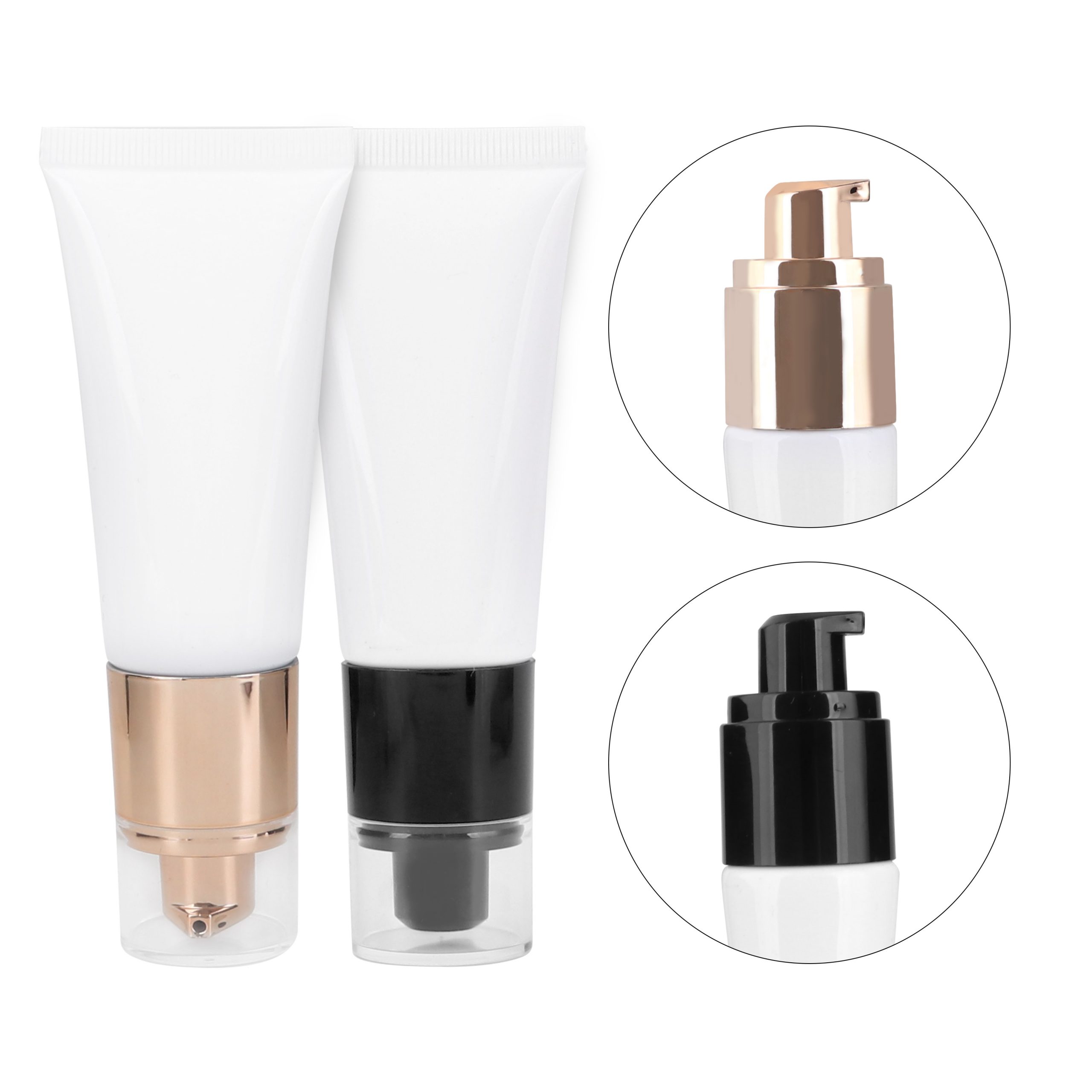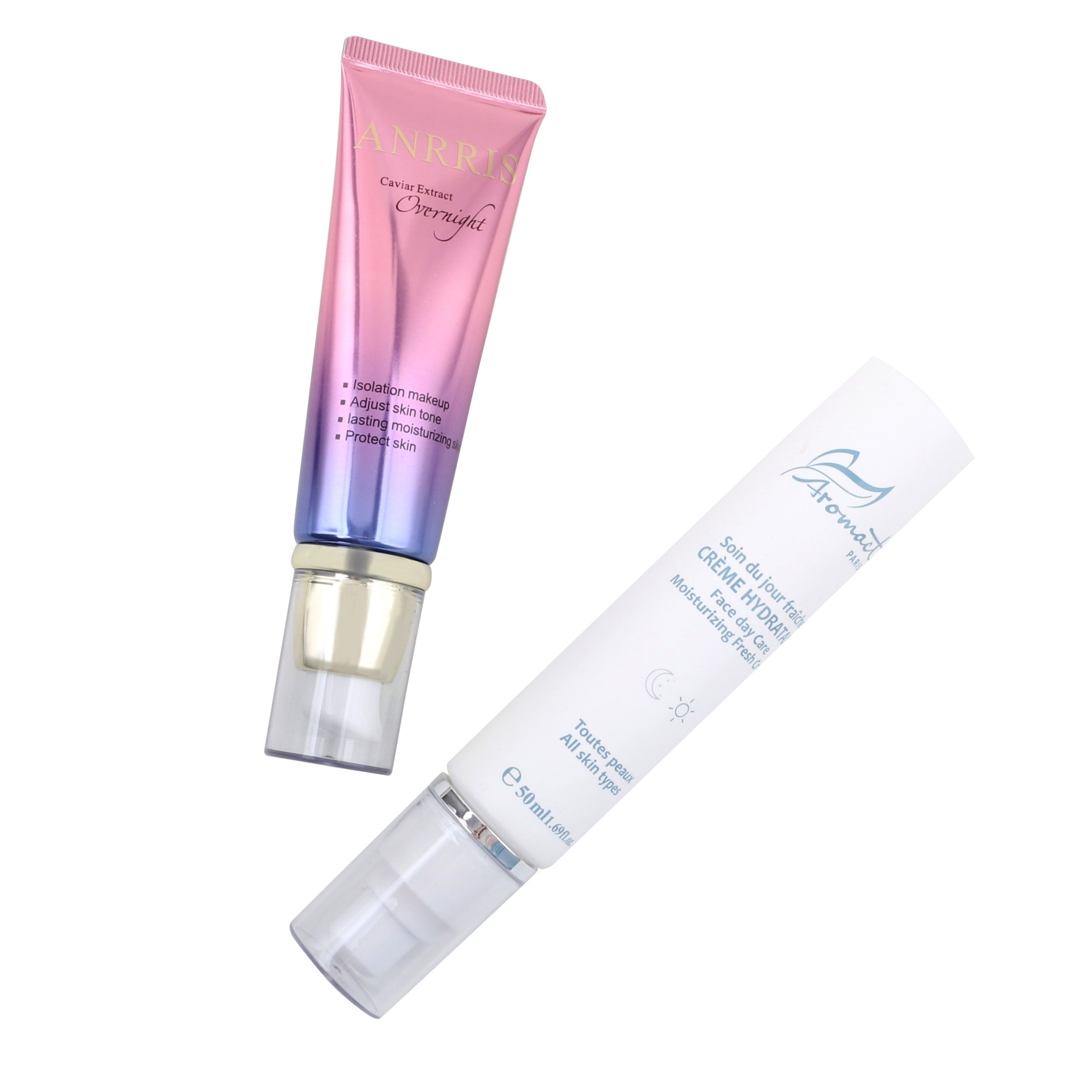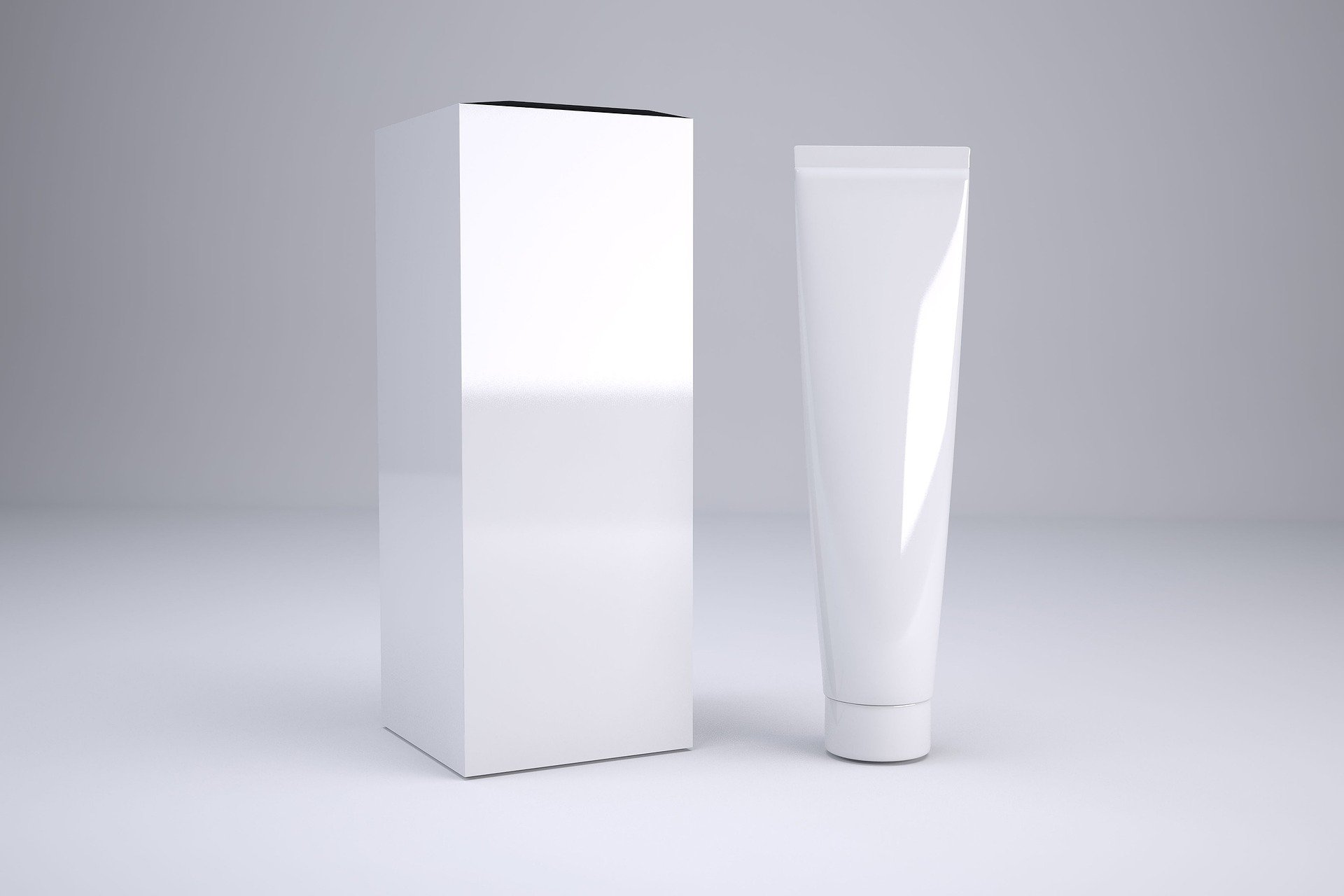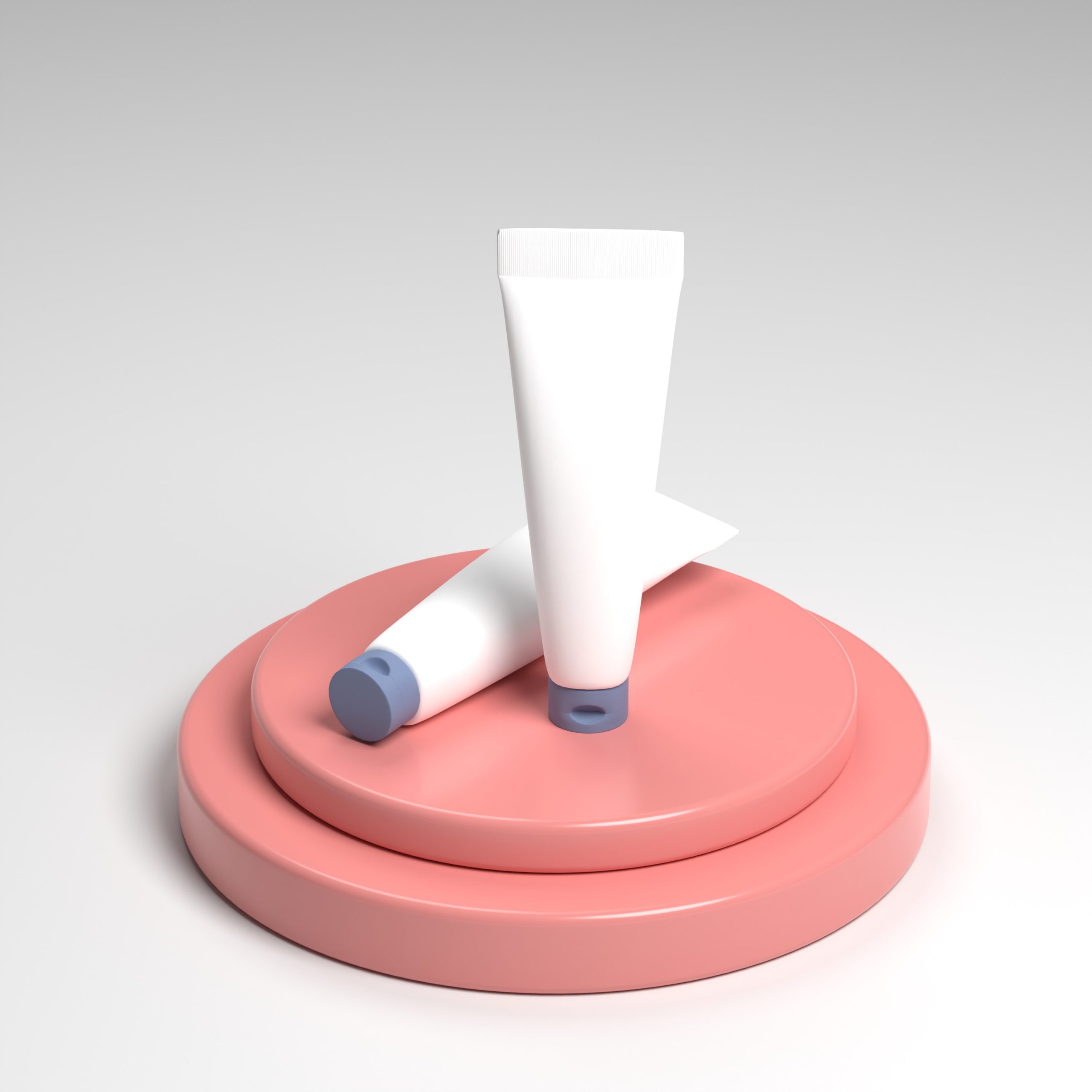Introduction
In the ever-evolving cosmetic industry, the tube packaging method has gained significant prominence owing to its remarkable convenience, diverse options, and cost-effectiveness. With its wide-ranging applications, this packaging method has become a mainstream choice for many cosmetic companies. In this blog, we aim to provide a comprehensive analysis of the two primary types of tubes utilized in the industry: aluminum tubes vs plastic tubes. By exploring their respective characteristics, materials, manufacturing processes, and performance attributes, we aim to equip readers with a deeper understanding of these packaging solutions.
Content Outline:
PLASTIC TUBES
LAMINATED TUBES
ALUMINIUM TUBES
Plastic Tube
At APS, we supply a range of cosmetic plastic tubes, including eco-friendly options like sugarcane or post-consumer recycled (PCR) tubes. Our tubes range in diameter from 16mm – 60mm, accommodating volumes from 5ml to 300ml. These tubes can be made to be recyclable and can be individualised with a wide range of decorative techniques. Plastic tubes are an excellent choice for many cosmetic and skincare products
Material Sanitation:
Ensuring adherence to relevant health standards is of utmost importance when selecting materials. It is crucial to control the presence of harmful substances, heavy metals, and fluorescent agents within prescribed limits.
For instance, tubes exported to the United States must comply with the U.S. Food and Drug Administration (FDA) standard 21CFR117.1520, which imposes limitations on polyethylene (PE) and polypropylene (PP) content.
Barrier Properties of Materials:
When dealing with contents sensitive to oxygen (such as certain whitening cosmetics) or highly volatile fragrances (like essential oils or corrosive chemicals), it is advisable to opt for a five-layer co-extruded tube.
A five-layer co-extruded tube, consisting of layers of polyethylene/binder resin/EVOH (ethylene-vinyl alcohol copolymer)/binder resin/polyethylene, boasts an oxygen transmission rate of 0.2 to 1.2 units. In contrast, a regular single-layer polyethylene tube has an oxygen transmission rate of 150 to 300 units.
Moreover, the inclusion of EVOH, with a thickness of 15 to 20 microns, provides excellent barrier properties and fragrance retention, making it an ideal choice for such applications.
Double-layer Tube:
A double-layer tube utilizes a combination of high-density HDPE (high-density polyethylene) and LDPE (low-density polyethylene) materials, blended uniformly through a pumping method and high-speed rotation. This achieves a balance between softness and hardness in the tube.
Compared to single-layer tubes, double-layer tubes have a thicker tube body, offering better corrosion resistance barriers and lower oxygen transmission rates. This makes them a preferred option for many daily cosmetics manufacturers.
Material Stiffness:
Cosmetic companies often have specific stiffness requirements for their tubes. Achieving the desired stiffness can be accomplished by adjusting the ratio of high-density polyethylene to low-density polyethylene, as these are the primary types of polyethylene used in tube production.
High-density polyethylene exhibits superior stiffness compared to low-density polyethylene, enabling customization to meet the desired stiffness standards.
Chemical Resistance of Materials:
High-density polyethylene demonstrates better chemical resistance when compared to low-density polyethylene. Therefore, considering the chemical compatibility of materials is crucial in ensuring the suitability of the tube for the intended cosmetic formulations.
Weather Resistance of Materials:
To ensure the tube’s performance and integrity in both short-term and long-term usage, various factors must be considered, such as appearance, pressure/drop resistance, sealing strength, environmental stress cracking resistance (ESCR value), as well as the retention of fragrance and active ingredients. By assessing these attributes, cosmetic companies can select materials that withstand the challenges posed by different environmental conditions.
Laminated Tubes
Laminated tubes have excellent barrier properties and are a cost effective solution to help increase a product’s shelf life and also house aggressive products. Their smooth, flexible and soft exteriors make them easy to use and transport while being technically efficient. At APS, we supply both PBL (plastic laminated) tubes and also ABL (aluminium barrier) tubes.
Aluminum Barrier Laminated Tube (ABL Tube):
An Aluminum Barrier Laminated Tube, also known as an ABL Tube, is composed of a PE inner film, PE outer film, and a 10μm aluminum foil layer.
Packaging Performance:
The ABL Tube offers excellent packaging performance with several notable features. It provides effective isolation, ensuring the contents remain protected. The tube’s durability prevents easy breakage, while the fine printing allows for vibrant colors, resulting in an aesthetically appealing appearance. The ABL Tube maintains cleanliness and hygiene standards, offering ease of use and a soft touch. Furthermore, it exhibits good wrinkle resistance, enhancing its overall functionality.
Advantages:
Compared to all-aluminum tubes, Aluminum Barrier Laminated Tubes present several distinct advantages:
1. Lightweight: The ABL Tube is approximately 20%-30% lighter than all-aluminum tubes of the same specifications. This reduction in weight results in an 80% decrease in the amount of aluminum used per unit of product, significantly reducing overall packaging weight.
2. Simplified Production Process: The ABL Tube offers a simple production process, making it suitable for high-speed, continuous production. This simplicity results in lower energy consumption, reduced costs, and enhanced production efficiency.
3. Safety: The use of plastic as the inner wall material in ABL Tubes ensures improved corrosion resistance and guarantees health safety standards.
4. Oxidation Resistance: In addition to maintaining the barrier and oxidation resistance of all-aluminum tubes, the aluminum-plastic composition of ABL Tubes provides additional advantages similar to those of plastic tubes. These include anti-acid properties, resistance to discoloration, prevention of hardening, and prevention of oil-water separation.
Disadvantages:
1. PE Layer Control: Strict control of the PE layer is essential to prevent product deterioration. Any issues with the PE layer can potentially compromise the quality and effectiveness of the packaged products.
2. Recycling Challenges: The separation and recycling of ABL Tubes after disposal can be challenging due to their composite nature. This poses a limitation to their recyclability compared to more easily recyclable packaging materials.
It is crucial to consider these advantages and disadvantages when selecting the appropriate tube packaging option based on specific product requirements and sustainability goals.
Plastic Barrier Laminated Tube
PBL (Plastic Barrier Laminated) tubes are composed of a composite material that serves as the body of these laminate tubes. With a plastic laminate construction, they primarily consist of six layers of PE (polyethylene) and two bonding layers, with an EVOH (ethylene-vinyl alcohol copolymer) layer sandwiched between them for added strength. These components work together harmoniously to create this unique and versatile product.
Advantages:
Plastic Barrier Laminated (PBL) tubes offer numerous advantages for various applications:
1. Barrier Properties: PBL tubes exhibit exceptional barrier properties against vapor and oxygen. They effectively prevent the ingress of water vapor and oxygen, ensuring the freshness and integrity of the enclosed products. Additionally, these tubes provide an excellent aroma barrier, preserving the delightful fragrance of the contents.
2. Flexibility: The high flexibility of the PBL material enables it to withstand repeated deformation without cracking. This characteristic ensures the reliability and durability of the tubes, even under dynamic conditions.
3. Wide Range of Applications: PBL tubes, constructed from polymer films, offer the same reliability as tubes made from aluminum-based laminates. This versatility makes them suitable for a wide variety of applications, accommodating diverse product types and industries.
When considering packaging options, PBL tubes prove to be a superior choice due to their impressive barrier properties, flexibility, and adaptability to different use cases.
Aluminium Tubes
Aluminium tubes are the ultimate barrier tube, protecting the product from oxygen, fats, oil, moisture, odour, light and flavour absorption. They are also well suited for housing aggressive products. Aluminium tubes are often the tube of choice for packaging pharmaceutical ointments and creams, and natural products that need to be protected from oxygen.
Advantages
1. Rust Resistance: Aluminum, being the most commonly used metal, exhibits excellent resistance to rust. Its oxides are non-toxic and possess beneficial properties such as good shading, superior moisture and gas barrier, and exceptional processing performance. Additionally, aluminum does not conduct heat, providing favorable characteristics like ductility, airtightness, and complete protection of drugs.
2. Tightness: All-aluminum tubes offer outstanding gas tightness. These tubes are manufactured using a single material punching and extrusion process, ensuring there is no possibility of leakage caused by different materials.
3. Recyclable: All-aluminum tubes can be recycled and smelted to be reused. This feature contributes to environmental sustainability and resource conservation.
Disadvantages
1. Low Production Efficiency and High Cost: The production efficiency of all-aluminum tubes is relatively low, resulting in higher costs compared to alternative options.
2. Fragility and Breakage: All-aluminum tubes are prone to breaking during use due to their poor strength. Additionally, their extrusion feel is not satisfactory.
3. Corrosion with Certain Contents: All-aluminum tubes may experience corrosion when exposed to corrosive substances, such as creams found in flooring products. This corrosion can lead to penetration holes and breakage, potentially allowing aluminum ions to enter the tube contents.
Why Choose PrimePac
PrimePac stands out as a leading choice due to our unique combination of design expertise, brand innovation, and streamlined processes. We take pride in our ability to deliver tailored packaging solutions that meet the diverse needs of a global clientele.
Our team of creative professionals possesses the in-house knowledge and extensive network required to craft innovative packaging designs. With an unwavering commitment to excellence, we ensure that our solutions resonate with various target markets.
At PrimePac, we understand the importance of seamless collaboration. From our dedicated sales team and warehouse staff in Australia to the skilled experts at our state-of-the-art production facilities in China, all of our employees embody our core values: integrity, innovation, passion, and engagement. These values serve as the foundation of our business and guide us in every aspect of our operations.
Conclusion
We sincerely appreciate your time and attention in reading our blog post on cosmetic plastic tubes.
We trust that this article has provided valuable information and insights to aid your understanding.
Should you have any inquiries or seek further knowledge regarding our extensive range of tube options, we encourage you to reach out to us without hesitation.
Our team is readily available to address your specific requirements and provide you with a personalized quote for our exceptional products. Once again, we express our gratitude for your interest in our company and look forward to the opportunity of serving you.




